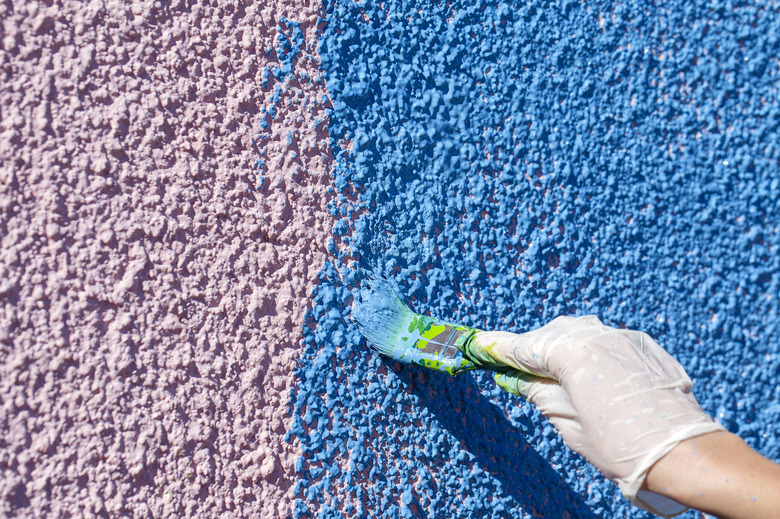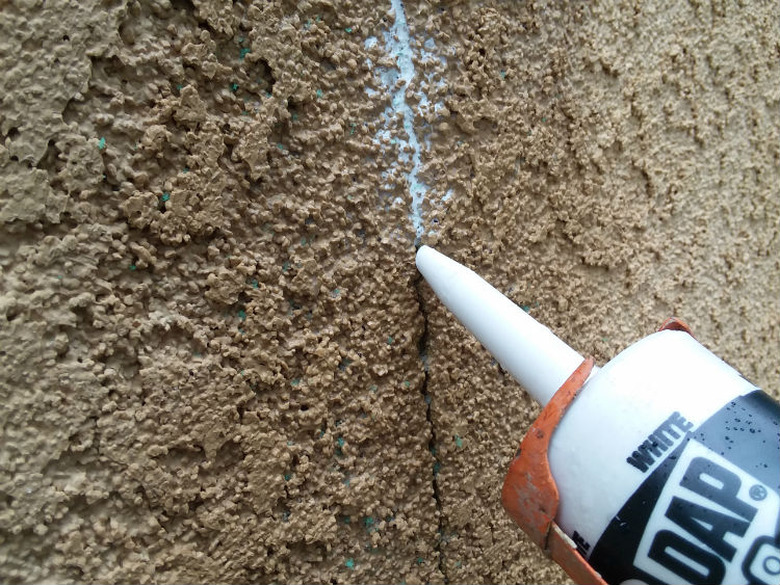Tips For Maintaining And Repairing Stucco
Wherever mud is available, people over the centuries and millennia have used it for coating their houses. Stucco isn't exactly mud, but it's close. Traditional stucco is basically a mixture of Portland cement and sand. It's applied in three layers over a metal lath substrate and on top of a waterproofing barrier. When it's properly installed, a typical stucco coating can last from 50 to 80 years with minimal maintenance, according to estimates from industry professionals. This makes it among the most durable and trouble-free of all siding materials.
But minimal maintenance isn't the same as no maintenance. Stucco does need periodic cleaning to remove dirt and mold that infiltrate the porous concrete. Stucco also needs occasional repair, because it can crack and chip in response to prolonged exposure to changing weather conditions or foundation settling. Intense sunlight can cause fading, which begs the question of whether or not it's a good idea to paint stucco. There isn't a definitive answer, but you should know a few things about the possible drawbacks before you consider painting as an option.
Can You Paint Stucco?
What appears to be a stucco siding surface is not always what it appears to be. If your house has an EIFS (Exterior Insulation Finishing System) coating, it may look like stucco, but it's something qualitatively different. EIFS is sometimes known as synthetic stucco, and it began to take hold in the U.S. in the 1980s. Because an EIFS coating is basically rubber and plastic, it requires even less maintenance than traditional stucco, and few precautions apply. You can paint it without a second thought, and you seldom have to worry about cracks or chips.
The standard way to color classic stucco is to include the colorant in the final coat during the installation process. This is why the final coat is called the color coat. The color will eventually fade, and if you want to restore it, the safest option is to re-dash—which means to apply a fresh top coat of pre-tinted stucco.
Some contractors are adamant that you should never paint stucco. According to them, the only safe way to restore faded color is to re-dash. However, that advice isn't universal. Painting companies exist that specialize in stucco buildings, and paint manufacturers, such as Kelly-Moore, publish instructions online for painting stucco. If you're considering painting your stucco house, though, you should keep two important things in mind.
First, remember that stucco, being cement, is porous, and it needs to breathe. If you cover it with paint, you block its ability to shed moisture, and the moisture will deteriorate the stucco and cause the paint to bubble and peel. Contractors agree that you should never paint freshly applied new stucco. It needs to cure for at least 30 days. If painting properly cured stucco is absolutely necessary, the best paint is an elastomeric www.hunker.com="" 12298974="" how-to-stucco-a-cinder-block-wall"=""> product that remains flexible when it dries. Second, remember that if you paint stucco, you can forget about recoating it. Fresh stucco won't stick to a painted surface. It will chip off after a few weeks or months.
How to Clean Stucco
Leave a large surface made of sand and cement exposed to the elements, and it's bound to collect grime and mold. If the color of your stucco has darkened and become less attractive than when it was new, it usually just needs a good cleaning, not painting or recoating.
You can use a power washer on stucco, as long as you keep the pressure below 2,800 psi. Anything more than that could cause chipping and gouging. If you want to remove all the mold and algae (which you do), precede the actual power washing with an application of oxygen bleach. Mix the powdered bleach in water according to the recommended proportions on the container, put it in a garden sprayer, and saturate the stucco. It's best to do this on a cloudy day so the stucco remains wet for about 30 minutes. After this much time has elapsed, go ahead and power wash. You won't need much pressure to remove all the stains and blackened areas.
Tip
Bleach can wreak havoc on landscape plants, though, so make sure to protect prize shrubs and other plants. A thoroughly watering of foliage immediately after using bleach on the siding can prevent damage to plants.
By far the safest and most effective way to clean stucco is to scrub it, although that requires much more time and effort than power washing. However, scrubbing with a hard-bristle brush may be warranted if you need to clean only certain parts of the house that are in shade and covered with mold. Make a cleaning solution by dissolving 1 cup of trisodium phosphate (TSP) in a gallon of water. Wear gloves and goggles when scrubbing this onto the siding. It's slightly caustic and can cause skin burns. Thoroughly rinse the areas you scrub with clean water.
Patching Cracks and Holes in Stucco
As stucco ages, hairline cracks usually begin to develop, and when they begin to accumulate and become noticeable, you eventually have to deal with them. Hairline cracks are those that are less than 1/4 inch wide, and you can fill these with caulk. Stucco-patching caulks are usually made from latex resin, which allows them to remain flexible enough to stretch and keep the crack filled if it widens slightly.
Applying caulk to stucco isn't much different than applying caulk to any other surface. It's recommended to widen the crack with a chisel and form a V-groove before you apply it. This improves adhesion. Squeeze the trigger of the caulk gun as you draw the tip along the crack, then tool the bead with your finger when you're done. Wipe off excess caulk with a damp sponge. To blend the line into the rest of the wall, rub a little sand into the caulk before it sets.
Larger cracks, chipped-out areas and other repairs call for stucco patching compound. Before you apply this material, be sure to remove any loose material from the area that needs patching and chisel out the sides of crack to make V-grooves. Mix the patching compound according to the instructions on the container and use a masonry float or trowel to fill the hole or gap completely. Smooth the patched area with a trowel and let the compound set. If you want to camouflage the repair by matching the texture, do this after the compound has set by applying a separate coat of stucco patch, using a comb or trowel to duplicate the texture pattern.



